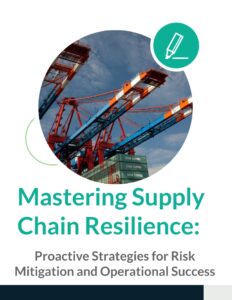Challenge
An ambitious eCommerce brand, known for its curated product offerings and fast delivery, approached us during a period of intense growth. The company had previously relied on a third-party logistics (3PL) provider for all warehousing and fulfillment needs, including pick, pack, kitting, returns, and ship functions. While this model had worked during the company’s early stages, it began to unravel as order volumes surged.
Operational costs were escalating month-over-month. The 3PL lacked the agility to adapt to the brand’s growth trajectory, and performance issues, such as shipping delays, inventory inaccuracies, and lack of visibility into fulfillment, were directly affecting customer satisfaction and threatening the brand’s competitive edge.
The client knew they needed to take control of their entire supply chain, from vendor communications to last-mile delivery, but lacked the internal expertise to develop a scalable, cost-effective logistics infrastructure. That’s when we were brought in to assess the current state, design the future state, and lead the execution.
Approach
We began with an in-depth discovery process to understand the nuances of the client’s business, including product mix, order volumes, seasonal fluctuations, customer expectations, vendor partnerships, and their current tech stack.
Step 1: Strategy and Systems Assessment
- Technology Audit: The client was using multiple disconnected systems that created data silos across inventory, finance, and operations. We conducted a full evaluation of their current software and implemented both ERP and WMS platforms, focusing on total cost of ownership, usability, and scalability.
- Process Mapping: We developed detailed process maps of current warehouse workflows, identifying areas of duplication, lag time, and breakdowns in communication. This formed the baseline for future-state design.
- Licensing & Location Schema: We created a strategic bin location and pick flows for their warehouse management system, enabling faster pick rates and better space utilization.
Step 2: Fulfillment Center Design and Build
We led the design and build of an in-house logistics and fulfillment center, transforming an underutilized commercial space into a fully functional distribution hub. This included:
- Warehouse Layout: Engineered to optimize space, reduce human capital walk time, and facilitate high-volume throughput. Specific zones were created for receiving, quality control, inventory, packing, and outbound shipping.
- Equipment Selection: We specified and sourced racking, pick cart systems, packing stations, and safety equipment based on forecasted volume and SKU profiles.
- Pick Path Engineering: Pick paths were designed to minimize footsteps and maximize efficiency. We introduced wave picking for high-volume SKUs and zone picking for customized orders.
- Technology Integration: A unified ERP and WMS ecosystem was implemented to provide real-time visibility across inventory, order management, procurement, and vendor performance.
Step 3: Risk Reduction and Vendor Diversification
The client had been heavily reliant on a small roster of vendors, exposing them to cost inflation and supply risks. We:
- Conducted a comprehensive vendor and supplier analysis, identifying redundant costs and vague terms in supplier contracts.
- Introduced alternative vendors and developed a diversified sourcing strategy to reduce single-point failures.
- Built a vendor performance scorecard for long-term quality and cost tracking.
Step 4: Process Optimization and Change Management
We ensured all internal processes were future-ready:
- Created training programs and SOPs for warehouse staff.
- Developed internal dashboards for KPI tracking across fulfillment, inventory accuracy, and shipping SLAs.
- Integrated real-time reporting for decision-makers to act on current performance metrics.
Results
The transformation delivered measurable and sustainable outcomes across operations and finance:
- Monthly Operating Costs Reduced by 84%: By bringing fulfillment in-house, eliminating unnecessary vendor fees, and optimizing workflows, the client realized significant recurring savings.
- Error Rates Dropped by ~15%: Improved inventory accuracy and streamlined packing procedures reduced customer complaints and returns.
- 15% Revenue Growth and Market Expansion: With greater control over logistics and vendor relationships, the client was able to expand their product catalog, reduce time-to-market, and offer faster shipping options, unlocking new markets and revenue streams.
- Increased Visibility and Control: Real-time data dashboards now allow leadership to make informed decisions around purchasing, fulfillment, and vendor negotiations.
- Improved Customer Experience: Faster delivery, fewer shipping errors, and transparent order tracking have strengthened customer loyalty and repeat business.
Today
The client now operates a best-in-class internal logistics and fulfillment center that supports their continued growth and positions them as a nimble, cost-efficient competitor in the eCommerce landscape. With end-to-end supply chain control, they’ve turned a costly liability into a strategic asset, future-proofing their operations for the long haul.






